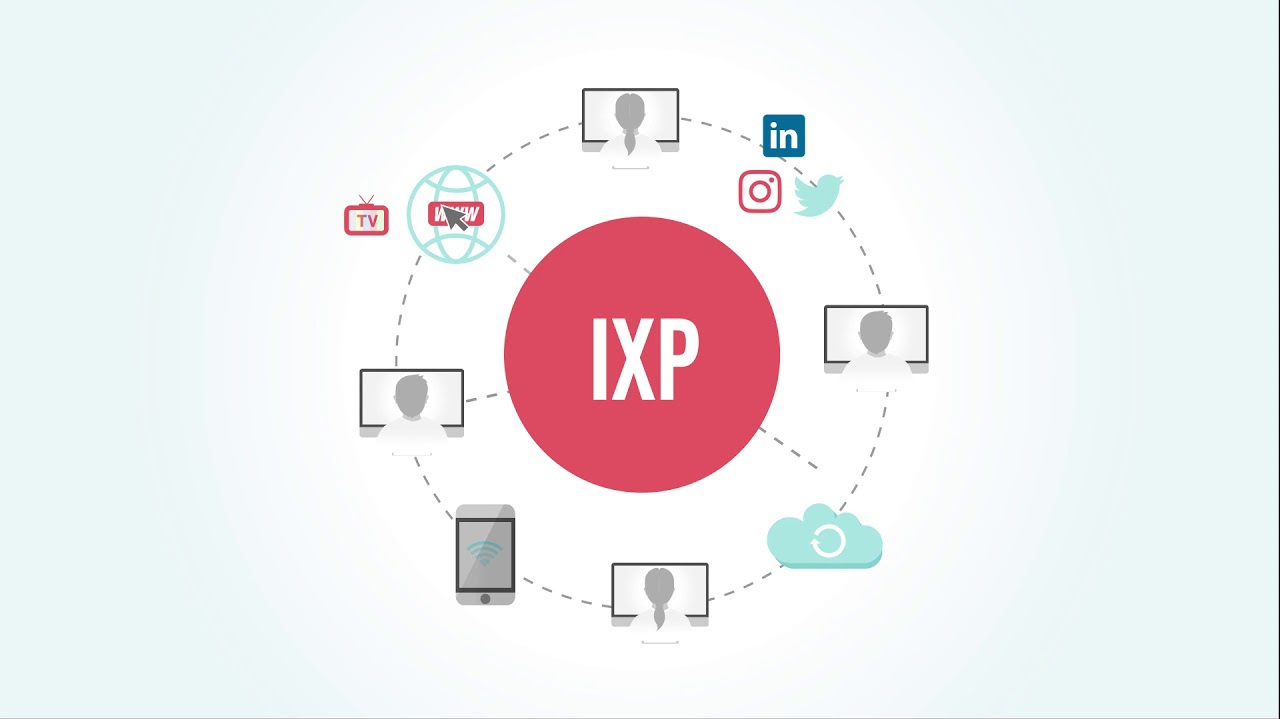What is IXP? Concept, How it Works and Benefits
To maintain and develop the Internet environment, there are many important factors, one of which is IXP (Internet Exchange Point). This article will delve into what IXP is, who uses IXP, how it works and the benefits it brings. Let’s explore with HiTechCloud !
What is IXP?
IXP (Internet Exchange Point) appeared in the 1990s, when the need for data exchange between Internet networks was increasing. The first areas where IXP developed were mainly in North America and Europe. Over time, with the explosion of the global Internet, IXP gradually spread to many countries around the world, including Vietnam.
The formation and development of IXP is not simply about building a place to connect, but also a long process of improving the quality and service capacity of the Internet. Today’s IXPs often not only focus on traffic exchange but also provide additional services such as network monitoring, security and technical support.
An IXP is a physical network connection hub that allows different networks to exchange traffic directly with each other without going through an intermediate network. In other words, an IXP is where the connection process between Internet service providers (ISPs), corporate intranets, data centers, and government agencies takes place, for the purpose of exchanging Internet traffic.
Who is using IXP?
The users of IXP are diverse and varied, but the following main groups will be mentioned.
Internet Service Provider (ISP)
ISPs are the main users of IXPs. They connect to IXPs to exchange traffic with other ISPs, thereby reducing operating costs and improving service quality for customers. When an ISP uses an IXP, they not only save on connection costs but also improve reliability and speed of access for their users.
In addition, cooperation between ISPs through IXPs also creates opportunities for new services.
Business
Many businesses also leverage IXP to connect offices, data centers, and intranets together. Using IXP allows businesses to easily access live network services, thereby improving interoperability and information sharing internally.
Businesses can save money and time by using IXPs, instead of relying on intermediary service providers. Furthermore, this helps increase the security of their data, as information does not need to travel through multiple external networks.
Data Center
Data centers are also one of the major users of IXPs. They connect to ISPs, corporate intranets, and other data centers to provide data storage, networking, and server services. Using IXPs helps data centers optimize connections and reduce latency in data transmission.
How does IXP work?
Connection: The process begins when networks connect to the IXP via dedicated connections called bandwidths. Each network establishes a physical connection to the IXP, allowing for efficient data transfer.
Traffic exchange
When a network wants to send traffic to another network, instead of going through an intermediate network, it sends the packet directly to the IXP. Here, the IXP examines the IP address of the packet to determine the destination network. This traffic exchange happens instantly, reducing latency and improving transmission speeds. By directly exchanging data, IXPs contribute to a more efficient network connection.
Forward
Once an IXP receives a packet from the sending network, it will classify and forward the packet to the destination network based on the IP address. This process is fast, ensuring that the information is delivered to the right place without any obstacles. One of the strengths of an IXP is its ability to handle large volumes of traffic while maintaining high reliability. By using modern technology, an IXP ensures that each packet is forwarded accurately and on time.
Complete the process
Finally, the destination network receives the packet and processes it. Once this process is complete, the information has been successfully exchanged between the two networks without having to go through any intermediate networks. This not only reduces page load time but also improves the user experience on the Internet.

How does IXP work?
IXP Model
There are two popular IXP models today: traditional IXP and virtual IXP. Each model has its own characteristics suitable for different users.
Traditional IXP
The traditional IXP model is where networks connect directly to the IXP via dedicated connections. This model requires networks to invest in infrastructure and equipment to make the connection.
Traditional IXPs are often deployed in large cities or areas with high Internet traffic density. This allows networks to maximize their transmission capacity and minimize operating costs by exchanging traffic directly.
A prominent advantage of this model is the high reliability due to the direct connection between networks. However, the disadvantage of this model is that it requires a large initial investment to set up and maintain the infrastructure.
Virtual IXP
The virtual IXP model allows networks to connect to IXPs through virtual network service providers (VPS) or brokers. This model is becoming increasingly popular because it is cost-effective for small networks.
With the virtual IXP model, networks do not need to make large investments in infrastructure, but instead can rent services from providers. This opens up connectivity opportunities to more networks, while minimizing financial risk for smaller organizations.
While the virtual IXP model does not achieve the same level of reliability as the traditional model, it still provides a flexible and efficient method of connectivity for many businesses and organizations.
The benefits of IXP
IXP brings many benefits to the networks that use it, not only reducing costs but also improving speed and reliability. Here are some of the prominent benefits that IXP brings to users and society.
Cost savings
One of the biggest benefits of IXPs is the ability to reduce transmission costs. Direct traffic exchange through IXPs allows networks to save money by not having to pay intermediary networks.
Organizations that join IXPs can benefit from reduced bandwidth costs, especially for high-volume networks. Instead of paying service providers to send traffic out, they can leverage IXPs to optimize operating costs.
By using IXPs, networks can reduce bandwidth costs. They do not need to send traffic through intermediate networks, which saves resources and increases bandwidth efficiency.
In addition, IXP improves reliability and access speed, which also helps improve the quality of online videos and games. For gamers or those who have high requirements for video quality, reducing latency and increasing reliability is extremely important. People will feel more satisfied when experiencing online services without experiencing lag or disconnection.
Maintain stable Internet connection
Another benefit of IXPs is the ability to reduce latency. Directly exchanging traffic between networks reduces transmission times, ensuring faster response times and a smoother online experience.
Internet users are more satisfied with fast response times, which creates a better experience when accessing online services. This is especially important for applications that require high access speeds such as online video or online games.
Improve Internet access speed
When traffic is exchanged directly through IXPs, website and application load times are significantly reduced, thereby improving user experience.
Research shows that users are impatient when it comes to waiting for a website to load. If a page takes too long to load, they may leave the site and look for a different experience. That’s why optimizing page load speed through IXP is so important.
Create more economic development opportunities
The growth of IXP also means the creation of many new jobs in the fields of networking, information technology and related fields. The staff needed to manage, maintain and develop IXP will have the opportunity to work in a dynamic and potential environment.
The increase in the number of businesses using IXPs also creates more job opportunities for people working in the technology and network services sector.
Conclude
IXPs are an important element in the development and improvement of the Internet. By allowing networks to connect to each other directly and efficiently, IXPs bring many benefits to users, including: reduced operating costs, improved reliability, increased access speeds, and economic growth.







